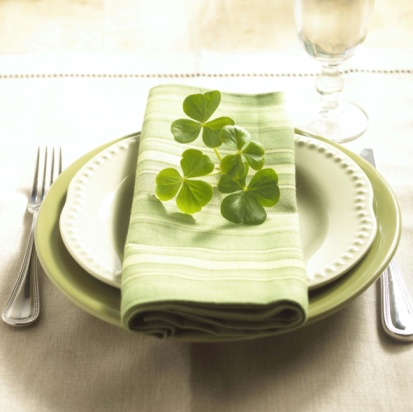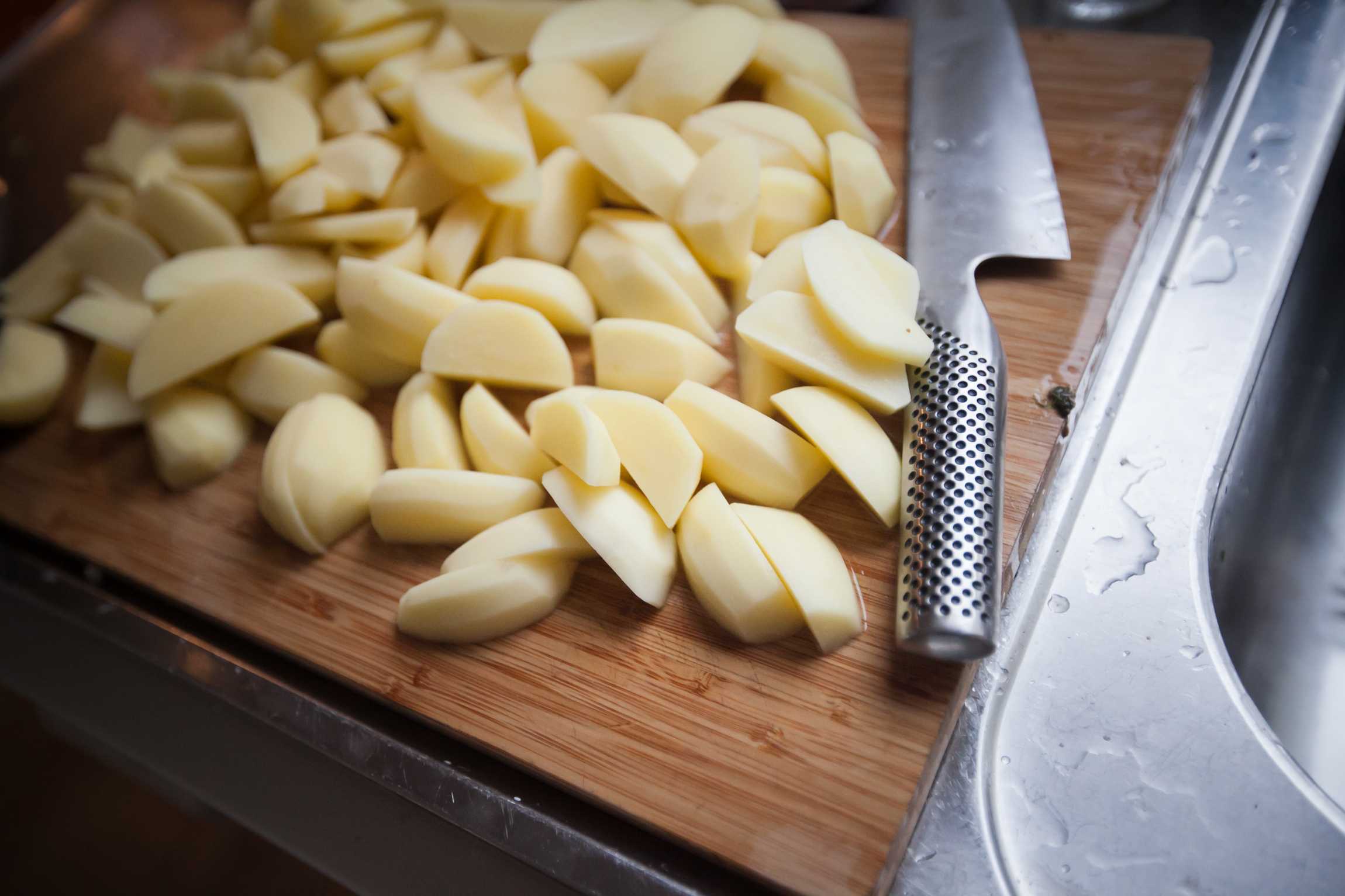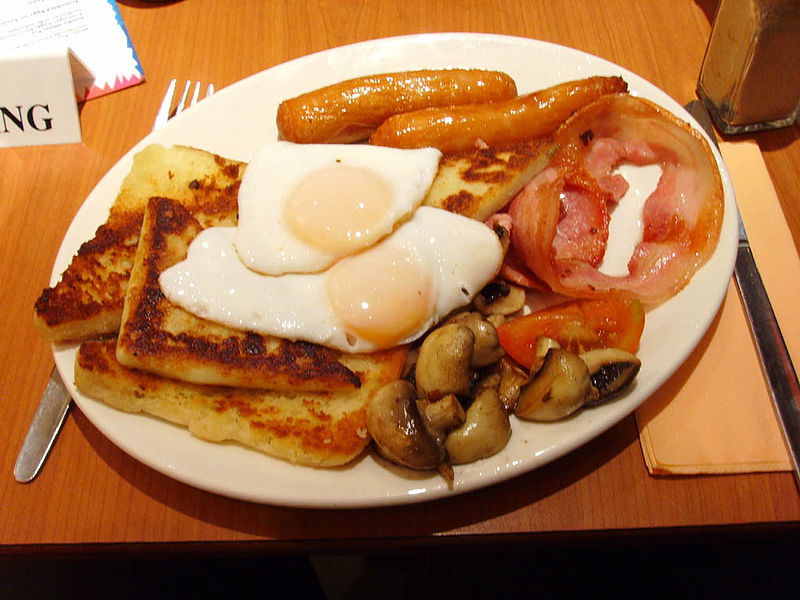
Editor’s Note: Blogger Bee Smith hails from the U.S., but she’s lived on the Emerald Isle for many years. This post was originally published in 2011.
Living in Ireland, I view with some bemusement the way St. Patrick’s Day is celebrated in the States. For in St. Patrick’s Ireland there is nary a green-dyed beer to found. It would be thought sacrilege to taint a worthy brew that way!
All over Ireland there are parades. On this point both cultures concur. Even in my tiny village there will be quite a long parade led by a pipe and drum corps, followed by floats created by the local businesses and community groups.
First, however, I have to break the news to you that St. Patrick is not really Irish. He was probably Welsh, so a Celt nonetheless, but he was taken hostage, enslaved and brought to the northeast part of Ireland. Later he escaped, was ordained a priest and obtained permission to head a Christian mission to Ireland.

Just as the Irish national saint is not really Irish, so the favoured food of Ireland, the potato, was only brought to the land by Sir Walter Raleigh during the reign of Elizabeth I. But the Irish became passionate about it because it was so well adapted to growing in the climate. Then the Blight Years of the mid-19th century decimated the crop, which was generally a single variety, the Lumper.
St. Patrick’s Day is usually the time when the ground is right for sowing your First Early potatoes. Or at least, it signals that you better run out to the garden centre and buy your seed potato quick because there probably won’t be any to be had after this date.
Perhaps as an atavism to The Hunger, but it is not unusual to go to restaurants or to family celebration meals to have potatoes served three ways — roasted (preferably in goose fat, but nowadays more often in HDL friendly olive oil), boiled, and chipped (the thick fingers not to be confused with the puny American French Fries).
To authentically celebrate St. Patrick’s Day, you could do no better than to celebrate the variety of potatoes and their textures — the floury potato for a fluffy mash, the waxy potato for roasting or making a salad.

Potato varieties are paramount. We plant at least four different kinds, an early like Orla, then first and second earlies or main crops like Cara or Rooster. We change varieties each year to ensure that we never become too dependent on just one variety. There are many blight resistant varieties these days, but the weather reports will still to this day report a “Blight Alert” during the summer months.
From late June onwards there are the lovely white flowers of the maturing potato. That’s when you need to start thinking about “Tatie Hoaking.” That’s Northern Irish dialect for potato picking.
In deference to my Armagh native partner, I have to mention the Ulster delicacy of potato bread. This is an essential part of the Full Irish Breakfast known as The Ulster Fry.

For a traditional fry you would need: Rashers of middle back bacon, fat sage seasoned sausages, a sunny side up egg, a slice of white pudding, a slice of black pudding, some fried tomatoes, mushrooms, a portion of tinned baked beans and the two pieces de resistance: a triangle of white soda bread — fried, of course — and the authentic potato bread or ‘tatie bread,’ as Tony calls it.
Ulster potato bread is not a yeast bread at all. Why it is referred to as “bread” is a mystery to me, but let’s just go with what the natives do and say.
Ulster Potato Bread
Potato bread is easy to make so long as you have a supply of smoothly mashed potatoes leftover from the night before. Add in salt, a little pepper and roughly an equal amount of plain white flour to potatoes to make a very stiff dough. Roll it out very thinly. Cut into 3″x 5″ rectangles, then half and fry — in lard for tradition’s sake, butter or oil. Fry until golden brown on both sides. Make sure they aren’t floppy — they should crisp up a bit.
Irish Champ
If you don’t fancy trying to replicate the Heart Attack on a Plate (as the breakfast is truly affectionately referred in the Northern provinces) you would be safer to celebrate with Champ.
Peel around 500 grams of potatoes (a little over 1 lb) — a good floury “mashing” variety. Boil until tender in salted water.
Meanwhile in another pan, place roughly ¼ cup of milk, a knob of butter, a dash of pepper and 2-3 chopped spring onions (scallions). Bring to the scalding point and switch off the heat.
Drain the cooked potatoes and gradually mash in the milk/scallion mixture until you have a nice mash. Don’t worry if it is a bit lumpy since the scallions are already “lumps” in the mash.
This would be a fine accompaniment to a boiled gammon, corned beef or beef brisket. Boiled meats are traditional and spring can still be very chilly. Spring cabbage, especially lovely dark green Savoy varieties, and kale would be an appropriate dinner to celebrate the Irish patron’s day.
Happy St. Patrick’s Day!





























